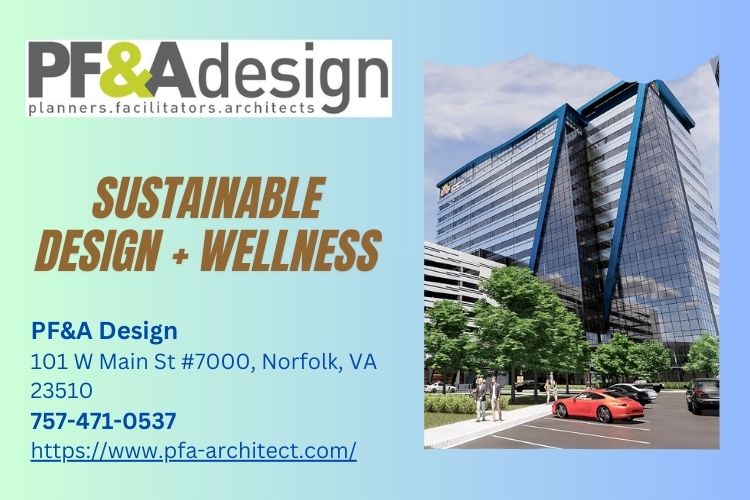Introduction
In the realm of architecture, the integration of natural light has become more than a mere trend; it is now a fundamental principle shaping modern building designs. Harnessing nature's light not only enhances the aesthetic appeal of structures but also significantly contributes to environmental sustainability and occupant well-being. As we delve into "Harnessing Nature: Integrating Natural Light into Building Design," we will explore how architects and designers are strategically utilizing daylight in their projects, leading to innovative solutions that promote comfort, energy efficiency, and productivity.
The Importance of Natural Light in Architecture Design
Understanding Natural Light: The Basics
Natural light refers to sunlight that enters a building through windows, skylights, and other openings. This light varies throughout the day and across seasons, creating dynamic atmospheres within indoor spaces.
Benefits of Natural Light in Building Design
Health Benefits: Exposure to natural light has been linked to improved mood, increased productivity, and better sleep patterns. Energy Efficiency: Utilizing daylight reduces reliance on artificial lighting, leading to lower energy costs. Aesthetic Appeal: Well-lit spaces appear larger and more inviting, enhancing the overall design.Architectural Principles for Maximizing Daylight
Orientation and Placement of Windows
Choosing the right orientation for windows is crucial. South-facing windows generally receive more sunlight throughout the day compared to north-facing ones.
Use of Reflective Surfaces
Incorporating reflective surfaces can help bounce natural light deeper into a building’s interior.
Lighting Design Strategies for Harnessing Natural Light
Daylighting Techniques in Architectural Design
Skylights and Clerestories
These architectural features allow for direct sunlight while minimizing glare. They can transform dark spaces into vibrant areas filled with natural illumination.
Light Shelves
Light shelves are horizontal surfaces that reflect sunlight deeper into a room while shading lower areas from excessive heat.
Innovative Technologies in Lighting Design
Smart Glass Technology
Smart glass can adjust its transparency based on external conditions, ensuring optimal light levels without sacrificing energy efficiency.
Automated Shading Systems
These systems adapt according to sunlight intensity, reducing glare while maximizing daylight intake.
Interior Design Considerations for Natural Lighting
Creating Open Spaces with Ample Daylight
An open floor plan promotes airflow and maximizes exposure to natural light.
Furniture Arrangement for Optimal Light Flow
Strategically placing furniture can enhance accessibility to daylight while maintaining functionality within the space.
Color Schemes That Reflect Light Effectively
Choosing lighter colors for walls and furnishings can amplify the effects of natural light, creating brighter interiors.
Sustainability Through Natural Light Integration
Reducing Carbon Footprint with Daylight Utilization
By relying on natural sources of illumination, buildings can significantly reduce their carbon emissions associated with electricity use.
Net-Zero Energy Buildings
Integrating natural light is vital for achieving net-zero energy status by minimizing energy consumption while meeting occupants' needs.
Case Studies: Successful Implementation of Natural Light in Building Design
PF&A Design’s Approach to Daylight Integration
PF&A Design showcases exemplary projects that effectively utilize natural light through innovative architectural strategies.


Project Example: The Eco-Friendly Office Space
This office design incorporates large glass facades allowing abundant daylight while facilitating outdoor views—enhancing employee satisfaction and productivity.
Global Examples of Innovative Daylighting Solutions
The Bosco Verticale (Vertical Forest) in Milan One Central Park in Sydney The Edge in AmsterdamChallenges in Integrating Natural Light into Building Designs
Balancing Glare and Heat Gain
Excessive sunlight can lead to glare or overheating interiors—a challenge that requires strategic planning during design phases.
Solutions: Using Shading Devices
Implementing external shading devices or smart materials can help manage these challenges effectively.
Cost Implications on Initial Investment versus Long-Term Savings
While integrating natural lighting may involve higher upfront costs (e.g., installing large windows), long-term savings through reduced electricity bills often outweigh initial investments.
Future Trends in Lighting Design Focused on Nature Integration
Biophilic Design Principles as a Framework for Future Projects
Biophilic design connects individuals with nature through elements like natural lighting—fostering healthier environments that improve quality of life.
Conclusion: The Future is Bright with Natural Light Integration
In conclusion, "Harnessing Nature: Integrating Natural Light into Building Design" represents an essential evolution in architectural practices aimed at promoting well-being and sustainability within our built environments. By prioritizing daylight access through thoughtful architectural choices—such as strategic window placements or innovative technologies—we not only enhance aesthetics but also contribute positively towards environmental conservation efforts. Ultimately, this approach paves the way for healthier living spaces conducive to both individual wellness and broader ecological balance.
Contact Us
PF&A Design
Address: 101 W Main St #7000, Norfolk, VA 23510
Phone: (757) 471-0537
FAQs about Integrating Natural Light Into Building Designs
1. What are the primary benefits of using natural light in building design?
Natural light enhances health by improving mood and productivity while reducing energy costs associated with artificial lighting systems.
2. How does orientation affect natural lighting?
Orientation influences how much sunlight enters a space; south-facing windows typically provide more consistent daylight compared to north-facing ones.
3. Are there specific materials that improve daylighting?
Reflective materials such as mirrors or glossy finishes can maximize daylight penetration by bouncing sunlight deeper into interior areas.
4. What are some common challenges when designing around natural light?
Managing glare and heat gain are significant challenges; therefore architects must incorporate strategic shading techniques alongside effective window placement strategies.
5. Can integrating natural light significantly impact energy efficiency?
Yes! By reducing reliance on artificial lighting during daytime hours, buildings equipped with ample access to daylight see marked decreases in overall electricity consumption leading ultimately towards sustainability goals like net-zero energy status!
6. Is it cost-effective to integrate more windows into a building’s design?
While initially costly due to installation expenses associated with larger windows/high-performance glazing systems—the long-term savings accrued from decreased utility bills often justify these investments!
Harnessing nature's gifts through intelligent architectural practices ensures our future remains bright—both literally & metaphorically—by building design embracing sustainable methods rooted firmly within our environment!